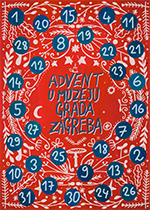During the first half of the 19th century, the large market-square Manduševac became the centre of the part of Zagreb that came to be known as the Lower Town.
Zagreb’s main square began to take shape with the construction of the General Charity Hospital, whose purpose and size ushered in a new age. The subsequent construction of buildings on the north and south sides of the square gave Harmica the characteristics of an enclosed square.
Zagreb’s wealthy merchants began to invest in real estate and built a number of imposing houses. The busiest architect of the time was Bartol Felbinger. The lay-out of the houses he designed was adapted to the requirements of his clients: the ground floor was reserved for offices and shops, the floor above that for the master’s residence.
Most shops and businesses were transferred from the Upper Town to the Lower Town, the new trading centre now stretching from St. Mark’s Square and Kamenita Street, via Duga ulica (Long Street) to Harmica and Ilica. With increasing competition, general stores were gradually replaced by specialized shops. Most of their owners were Greeks (Demeter, Stova, Mallin, Popović), who had settled in Zagreb after the Edict of Toleration, issued by Joseph II in 1781. By becoming citizens of Zagreb, a precondition for the right to engage in business, they could also form religious associations and thus the Orthodox Community was founded in Zagreb.
Harmica was the hub of busy traffic on the main roads leading to Vienna, Karlovac and Styria. Stage coaches brought many passengers to Zagreb, sellers and buyers, as well as travellers attracted by the city’s many shops and their imaginative and colourful signs. The variety and large number of shops in Zagreb at that time is witnessed by the many advertisements in the contemporary daily press. With the lively trade came new forms of entertainment; coffeehouses (there were four of them in Harmica alone), inns and restaurants were opened.
The Social Rise of the Hatz Family
Pavao Hatz, a distinguished citizen, trader and landowner, was the father of a family that had a successful role in the public and social life of Zagreb during the 19th century, and can be considered a model for the rise of the middle class in this country. He came from Hungary in 1808, started a shop in Pivarska (Brewery) Street, and by 1819 had obtained the rights of a citizen of Zagreb. In the spirit of the new bourgeois times, he made pioneer investments in the construction works in the new city squares. In 1828, he owned a three storey building with its own garden in Harmica Square; the house was built by Bartol Felbinger. It was meant for both residence and commerce, and its trade mark was the statue of Mercury on the front. This wealthy trader took part in patriotic events, supported by his sons and wife. He had a good nose for business, and was one of the first to build a big house on what was to be Zrinski Square, the rent bringing him a good profit. He soon owned a summer residence on Vrhovac, fitted up according to the life style of the current age. His son, Pavao the younger, was omnipresent in the social and public life of the city. In 1872/73 he became mayor, the honours of the office crowning the reputation of the Hatz family and confirming its rise to eminence.
Željka Kolveshi

